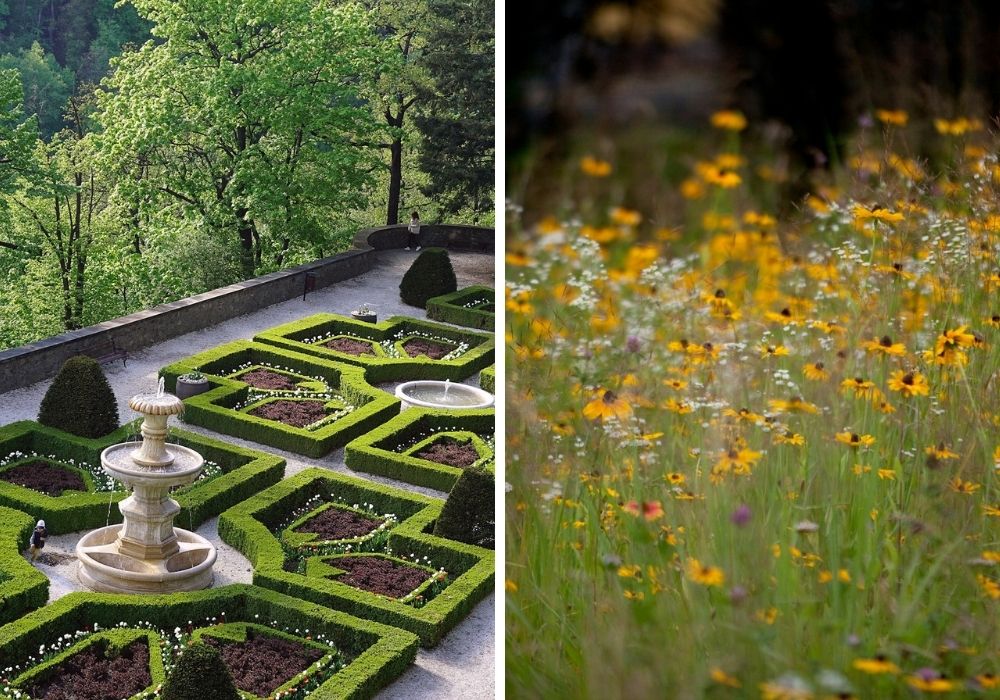Posts by admin
How to design natural gardens with a more formal look
How to bridge the gap between formal, traditional landscaping and naturalistic designs using native plants.
Read MoreCommon Blue Violet
Herbaceous perennial growing 10-15 cm tall. Features heart-shaped leaves and violet-blue (sometimes white) flowers blooming in spring. Spreads readily by seeds and rhizomes to form groundcover. Adaptable
Read MoreCanada Violet
Herbaceous perennial reaching 15-60 cm tall. Features heart-shaped leaves and white flowers with yellow centers and purple backs, blooming April-August. Prefers moist, rich soils and partial to full shade. Spreads by rhizomes and self-seeding. Attracts early-season pollinators. Suitable for woodland gardens, shaded borders, and as groundcover in moist, shaded areas. Native to North America.
Read MoreHighbush Cranberry
Deciduous shrub growing 2-4 m tall. Features maple-like, three-lobed leaves and flat-topped clusters of white flowers in late spring, followed by bright red berries persisting into winter. Prefers moist, well-drained soils and full sun to partial shade. Provides food for birds and wildlife. Fall foliage is often red to purple. Suitable for naturalized areas, shrub borders, and wildlife gardens. Native to northern and eastern North America.
Read MoreNannyberry
Deciduous shrub or small tree reaching 4.5-9 m tall. Features finely toothed, glossy leaves and flat-topped clusters of white flowers in late spring, followed by blue-black berries. Adaptable to various soil conditions and full sun to partial shade. Provides food for birds and wildlife. Fall foliage is often purplish-red. Suitable for naturalized areas, shrub borders, and wildlife gardens. Native to eastern and central North America.
Read MoreHobblebush
Deciduous shrub growing 2-4 m tall. Features large, heart-shaped leaves and flat-topped clusters of white flowers with larger sterile flowers around the edge, blooming in spring. Produces red fruits turning black when ripe. Prefers moist, well-drained soils and partial to full shade. Provides food for birds and small mammals. Suitable for woodland gardens and naturalized areas. Native to northeastern North America.
Read MoreNarrow-leaved verbain
Herbaceous perennial reaching 30-60 cm tall. Features narrow, lance-shaped leaves and slender spikes of small, lavender to blue-purple flowers blooming June-September. Prefers well-drained, rocky or sandy soils and full sun. Drought-tolerant once established. Attracts butterflies and bees. Suitable for rock gardens, prairies, and hot, dry sites. Native to eastern and central North America.
Read MoreBlue Vervain
Herbaceous perennial growing 90-150 cm tall. Features lance-shaped, opposite leaves and slender spikes of small, blue-violet flowers blooming July-September. Prefers moist soils and full sun. Attracts butterflies and supports native bees. Suitable for rain gardens, wet meadows, and pond edges. Self-seeds readily in ideal conditions. Native to most of North America.
Read MoreLowbush Blueberry
Low deciduous shrub reaching 15-60 cm tall. Features small, oval leaves and bell-shaped white to pink flowers followed by edible blue berries. Requires acidic, well-drained soils and full sun to partial shade. Spreads by underground rhizomes to form colonies. Spectacular fall color. Provides food for wildlife and humans. Suitable for acidic soil gardens, naturalized areas, and edible landscaping. Native to northeastern North America.
Read MoreRock Elm
Deciduous tree reaching 15-25 m tall with a vase-shaped crown. Features doubly serrate, asymmetrical leaves and distinctive corky wings on branches. Produces small, winged seeds. Prefers moist, well-drained soils and full sun to partial shade. More resistant to Dutch elm disease than American elm. Provides food and habitat for wildlife. Suitable for large landscapes and urban forestry. Native to central and eastern North America.
Read More







